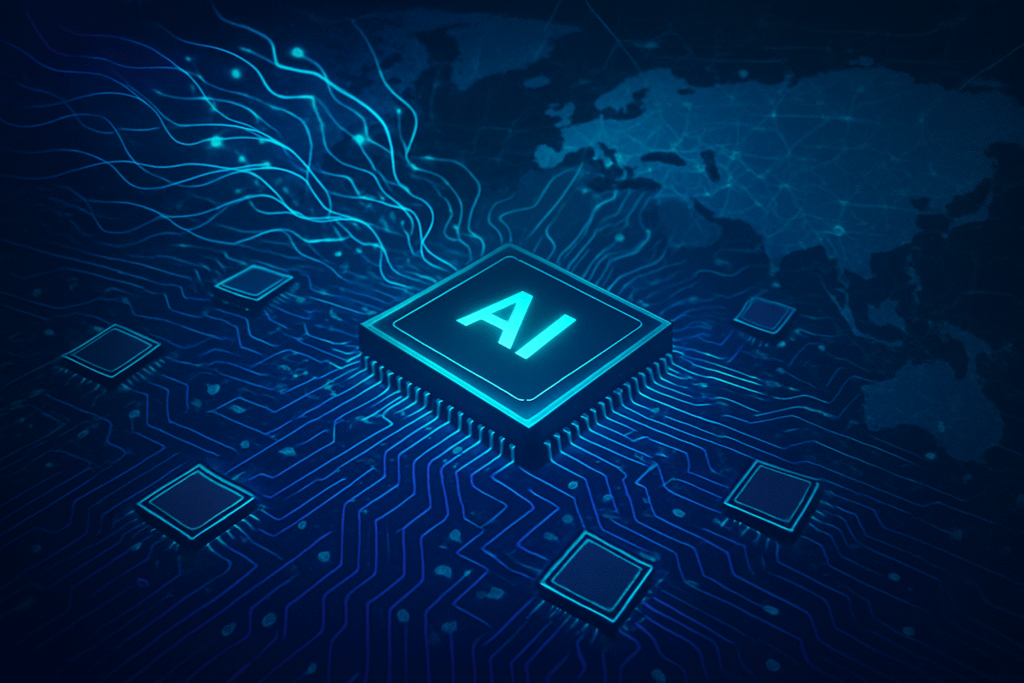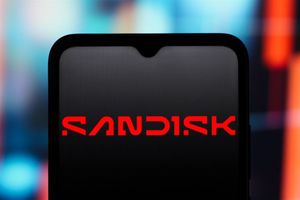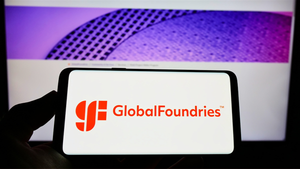
The world is currently in the midst of an unprecedented technological phenomenon: the 'AI Chip Supercycle.' This isn't merely a fleeting market trend, but a profound paradigm shift driven by the insatiable demand for artificial intelligence capabilities across virtually every sector. The relentless pursuit of more powerful and efficient AI has ignited an explosive boom in the semiconductor industry, propelling it towards a projected trillion-dollar valuation by 2028. This supercycle is fundamentally reshaping global economies, accelerating digital transformation, and elevating semiconductors to a critical strategic asset in an increasingly complex geopolitical landscape.
The immediate significance of this supercycle is far-reaching. The AI chip market, valued at approximately $83.80 billion in 2025, is projected to skyrocket to an astounding $459.00 billion by 2032. This explosive growth is fueling an "infrastructure arms race," with hyperscale cloud providers alone committing hundreds of billions to build AI-ready data centers. It's a period marked by intense investment, rapid innovation, and fierce competition, as companies race to develop the specialized hardware essential for training and deploying sophisticated AI models, particularly generative AI and large language models (LLMs).
The Technical Core: HBM, Chiplets, and a New Era of Acceleration
The AI Chip Supercycle is characterized by critical technical innovations designed to overcome the "memory wall" and processing bottlenecks that have traditionally limited computing performance. Modern AI demands massive parallel processing for multiply-accumulate functions, a stark departure from the sequential tasks optimized by traditional CPUs. This has led to the proliferation of specialized AI accelerators like Graphics Processing Units (GPUs), Tensor Processing Units (TPUs), and Application-Specific Integrated Circuits (ASICs), engineered specifically for machine learning workloads.
Two of the most pivotal advancements enabling this supercycle are High Bandwidth Memory (HBM) and chiplet technology. HBM is a next-generation DRAM technology that vertically stacks multiple memory chips, interconnected through dense Through-Silicon Vias (TSVs). This 3D stacking, combined with close integration with the processing unit, allows HBM to achieve significantly higher bandwidth and lower latency than conventional memory. AI models, especially during training, require ingesting vast amounts of data at high speeds, and HBM dramatically reduces memory bottlenecks, making training more efficient and less time-consuming. The evolution of HBM standards, with HBM3 now a JEDEC standard, offers even greater bandwidth and improved energy efficiency, crucial for products like Nvidia's (NASDAQ: NVDA) H100 and AMD's (NASDAQ: AMD) Instinct MI300 series.
Chiplet technology, on the other hand, represents a modular approach to chip design. Instead of building a single, large monolithic chip, chiplets involve creating smaller, specialized integrated circuits that perform specific tasks. These chiplets are designed separately and then integrated into a single processor package, communicating via high-speed interconnects. This modularity offers unprecedented scalability, cost efficiency (as smaller dies reduce manufacturing defects and improve yield rates), and flexibility, allowing for easier customization and upgrades. Different parts of a chip can be optimized on different manufacturing nodes, further enhancing performance and cost-effectiveness. Companies like AMD and Intel (NASDAQ: INTC) are actively adopting chiplet technology for their AI processors, enabling the construction of AI supercomputers capable of handling the immense processing requirements of large generative language models.
Initial reactions from the AI research community and industry experts have been overwhelmingly positive, viewing this period as a transformative era. There's a consensus that the "AI supercycle" is igniting unprecedented capital spending, with annual collective investment in AI by major hyperscalers projected to triple to $450 billion by 2027. However, alongside the excitement, there are concerns about the massive energy consumption of AI, the ongoing talent shortages, and the increasing complexity introduced by geopolitical tensions.
Nvidia's Reign and the Shifting Sands of Competition
Nvidia (NASDAQ: NVDA) stands at the epicenter of the AI Chip Supercycle, holding a profoundly central and dominant role. Initially known for gaming GPUs, Nvidia strategically pivoted its focus to the data center sector, which now accounts for over 83% of its total revenue. The company currently commands approximately 80% of the AI GPU market, with its GPUs proving indispensable for the massive-scale data processing and generative AI applications driving the supercycle. Technologies like OpenAI's ChatGPT are powered by thousands of Nvidia GPUs.
Nvidia's market dominance is underpinned by its cutting-edge chip architectures and its comprehensive software ecosystem. The A100 (Ampere Architecture) and H100 (Hopper Architecture) Tensor Core GPUs have set industry benchmarks. The H100, in particular, represents an order-of-magnitude performance leap over the A100, featuring fourth-generation Tensor Cores, a specialized Transformer Engine for accelerating large language model training and inference, and HBM3 memory providing over 3 TB/sec of memory bandwidth. Nvidia continues to extend its lead with the Blackwell series, including the B200 and GB200 "superchip," which promise up to 30x the performance for AI inference and significantly reduced energy consumption compared to previous generations.
Beyond hardware, Nvidia's extensive and sophisticated software ecosystem, including CUDA, cuDNN, and TensorRT, provides developers with powerful tools and libraries optimized for GPU computing. This ecosystem enables efficient programming, faster execution of AI models, and support for a wide range of AI and machine learning frameworks, solidifying Nvidia's position and creating a strong competitive moat. The "CUDA-first, x86-compatible architecture" is rapidly becoming a standard in data centers.
However, Nvidia's dominance is not without challenges. There's a recognized proliferation of specialized hardware and open alternatives like AMD's ROCm. Hyperscalers such as Google (NASDAQ: GOOGL), Amazon (NASDAQ: AMZN), and Microsoft (NASDAQ: MSFT) are increasingly developing proprietary Application-Specific Integrated Circuits (ASICs) to reduce reliance on external suppliers and optimize hardware for specific AI workloads. This trend directly challenges general-purpose GPU providers and signifies a strategic shift towards in-house silicon development. Moreover, geopolitical tensions, particularly between the U.S. and China, are forcing Nvidia and other U.S. chipmakers to design specialized, "China-only" versions of their AI chips with intentionally reduced performance to comply with export controls, impacting potential revenue streams and market strategies.
Geopolitical Fault Lines and the UAE Chip Deal Fallout
The AI Chip Supercycle is unfolding within a highly politicized landscape where semiconductors are increasingly viewed as strategic national assets. This has given rise to "techno-nationalism," with governments actively intervening to secure technological sovereignty and national security. The most prominent example of these geopolitical challenges is the stalled agreement to supply the United Arab Emirates (UAE) with billions of dollars worth of advanced AI chips, primarily from U.S. manufacturer Nvidia.
This landmark deal, initially aimed at bolstering the UAE's ambition to become a global AI hub, has been put on hold due to national security concerns raised by the United States. The primary impediment is the US government's fear that China could gain indirect access to these cutting-edge American technologies through Emirati entities. G42, an Abu Dhabi-based AI firm slated to receive a substantial portion of the chips, has been a key point of contention due to its historical ties with Chinese firms. Despite G42's efforts to align with US tech standards and divest from Chinese partners, the US Commerce Department remains cautious, demanding robust security guarantees and potentially restricting G42's direct chip access.
This stalled deal is a stark illustration of the broader US-China technology rivalry. The US has implemented stringent export controls on advanced chip technologies, AI chips (like Nvidia's A100 and H100, and even their downgraded versions), and semiconductor manufacturing equipment to limit China's progress in AI and military applications. The US government's strategy is to prevent any "leakage" of critical technology to countries that could potentially re-export or allow access to adversaries.
The implications for chip manufacturers and global supply chains are profound. Nvidia is directly affected, facing potential revenue losses and grappling with complex international regulatory landscapes. Critical suppliers like ASML (AMS: ASML), a Dutch company providing extreme ultraviolet (EUV) lithography machines essential for advanced chip manufacturing, are caught in the geopolitical crosshairs as the US pushes to restrict technology exports to China. TSMC (NYSE: TSM), the world's leading pure-play foundry, faces significant geopolitical risks due to its concentration in Taiwan. To mitigate these risks, TSMC is diversifying its manufacturing by building new fabrication facilities in the US, Japan, and planning for Germany. Innovation is also constrained when policy dictates chip specifications, potentially diverting resources from technological advancement to compliance. These tensions disrupt intricate global supply chains, leading to increased costs and forcing companies to recalibrate strategic partnerships. Furthermore, US export controls have inadvertently spurred China's drive for technological self-sufficiency, accelerating the emergence of rival technology ecosystems and further fragmenting the global landscape.
The Broader AI Landscape: Power, Progress, and Peril
The AI Chip Supercycle fits squarely into the broader AI landscape as the fundamental enabler of current and future AI trends. The exponential growth in demand for computational power is not just about faster processing; it's about making previously theoretical AI applications a practical reality. This infrastructure arms race is driving advancements that allow for the training of ever-larger and more complex models, pushing the boundaries of what AI can achieve in areas like natural language processing, computer vision, and autonomous systems.
The impacts are transformative. Industries from healthcare (precision diagnostics, drug discovery) to automotive (autonomous driving, ADAS) to finance (fraud detection, algorithmic trading) are being fundamentally reshaped. Manufacturing is becoming more automated and efficient, and consumer electronics are gaining advanced AI-powered features like real-time language translation and generative image editing. The supercycle is accelerating the digital transformation across all sectors, promising new business models and capabilities.
However, this rapid advancement comes with significant concerns. The massive energy consumption of AI is a looming crisis, with projections indicating a doubling from 260 terawatt-hours in 2024 to 500 terawatt-hours in 2027. Data centers powering AI are consuming electricity at an alarming rate, straining existing grids and raising environmental questions. The concentration of advanced chip manufacturing in specific regions also creates significant supply chain vulnerabilities and geopolitical risks, making the industry susceptible to disruptions from natural disasters or political conflicts. Comparisons to previous AI milestones, such as the rise of expert systems or deep learning, highlight that while the current surge in hardware capability is unprecedented, the long-term societal and ethical implications of widespread, powerful AI are still being grappled with.
The Horizon: What Comes Next in the Chip Race
Looking ahead, the AI Chip Supercycle is expected to continue its trajectory of intense innovation and growth. In the near term (2025-2030), we will see further refinement of existing architectures, with GPUs, ASICs, and even CPUs advancing their specialized capabilities. The industry will push towards smaller processing nodes (2nm and 1.4nm) and advanced packaging techniques like CoWoS and SoIC, crucial for integrating complex chip designs. The adoption of chiplets will become even more widespread, offering modularity, scalability, and cost efficiency. A critical focus will be on energy efficiency, with significant efforts to develop microchips that handle inference tasks more cost-efficiently, including reimagining chip design and integrating specialized memory solutions like HBM. Major tech giants will continue their investment in developing custom AI silicon, intensifying the competitive landscape. The growth of Edge AI, processing data locally on devices, will also drive demand for smaller, cheaper, and more energy-efficient chips, reducing latency and enhancing privacy.
In the long term (2030 and beyond), the industry anticipates even more complex 3D-stacked architectures, potentially requiring microfluidic cooling solutions. New computing paradigms like neuromorphic computing (brain-inspired processing), quantum computing (solving problems beyond classical computers), and silicon photonics (using light for data transmission) are expected to redefine AI capabilities. AI algorithms themselves will increasingly be used to optimize chip design and manufacturing, accelerating innovation cycles.
However, significant challenges remain. The manufacturing complexity and astronomical cost of producing advanced AI chips, along with the escalating power consumption and heat dissipation issues, demand continuous innovation. Supply chain vulnerabilities, talent shortages, and persistent geopolitical tensions will continue to shape the industry. Experts predict sustained growth, describing the current surge as a "profound recalibration" and an "infrastructure arms race." While Nvidia currently dominates, intense competition and innovation from other players and custom silicon developers will continue to challenge its position. Government investments, such as the U.S. CHIPS Act, will play a pivotal role in bolstering domestic manufacturing and R&D, while on-device AI is seen as a crucial solution to mitigate the energy crisis.
A New Era of Computing: The AI Chip Supercycle's Enduring Legacy
The AI Chip Supercycle is fundamentally reshaping the global technological and economic landscape, marking a new era of computing. The key takeaway is that AI chips are the indispensable foundation for the burgeoning field of artificial intelligence, enabling the complex computations required for everything from large language models to autonomous systems. This market is experiencing, and is predicted to sustain, exponential growth, driven by an ever-increasing demand for AI capabilities across virtually all industries. Innovation is paramount, with relentless advancements in chip design, manufacturing processes, and architectures.
This development's significance in AI history cannot be overstated. It represents the physical infrastructure upon which the AI revolution is being built, a shift comparable in scale to the industrial revolution or the advent of the internet. The long-term impact will be profound: AI chips will be a pivotal driver of economic growth, technological progress, and national security for decades. This supercycle will accelerate digital transformation across all sectors, enabling previously impossible applications and driving new business models.
However, it also brings significant challenges. The massive energy consumption of AI will place considerable strain on global energy grids and raise environmental concerns, necessitating huge investments in renewable energy and innovative energy-efficient hardware. The geopolitical importance of semiconductor manufacturing will intensify, leading nations to invest heavily in domestic production and supply chain resilience. What to watch for in the coming weeks and months includes continued announcements of new chip architectures, further developments in advanced packaging, and the evolving strategies of tech giants as they balance reliance on external suppliers with in-house silicon development. The interplay of technological innovation and geopolitical maneuvering will define the trajectory of this supercycle and, by extension, the future of artificial intelligence itself.
This content is intended for informational purposes only and represents analysis of current AI developments.
TokenRing AI delivers enterprise-grade solutions for multi-agent AI workflow orchestration, AI-powered development tools, and seamless remote collaboration platforms.
For more information, visit https://www.tokenring.ai/.





